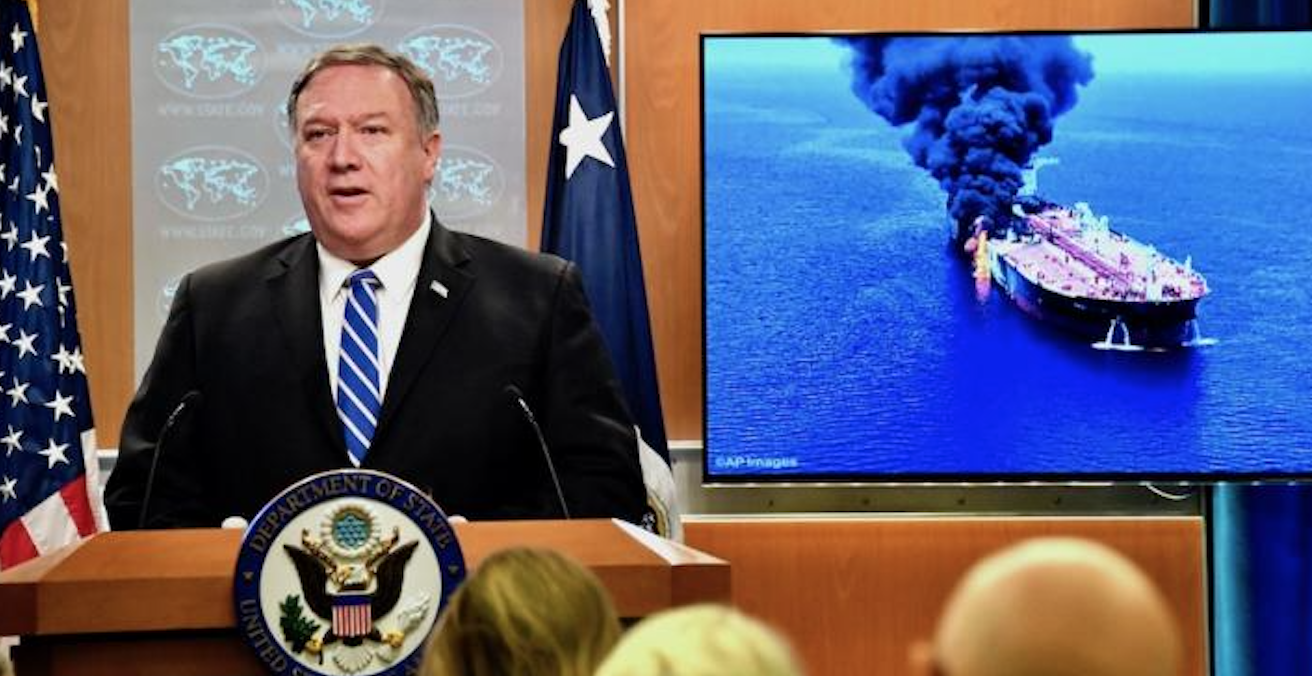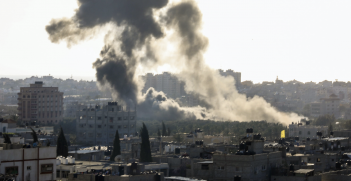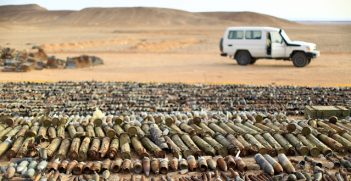The Gulf Tanker Crisis: Iranian Frustrations, US Mismanagement

While the trigger of last Thursday’s tanker attacks is more than likely Iran, culpability for the wider state of affairs remains squarely in Washington. Since limited reprisal strikes will not resolve this crisis but only harden Iran’s resolve, Washington should work to rebuild trust with Tehran.
The attacks last Thursday on the oil tankers Front Altair and Kokuka Courageous near the Straits of Hormuz represent the latest in a series of incidents that have set tensions in the Persian Gulf at levels unseen since the 2003 invasion of Iraq.
With Washington blaming the Islamic Republic of Iran (IRI), there are increasing fears that the emerging crisis may now lead to military escalations between America and the revolutionary state.
Accusations All Round
Despite the immediate public reaction, assigning legal responsibility for last Thursday’s attack will take time and require inquiry by international investigatory bodies. Inquiries around such dramatic events can often take years to resolve: case in point, the investigation of the 2014 downing of MH17 only assigned blame to Russia just last month despite glaring evidence of Moscow’s fingerprints from the outset.
Nevertheless, due process doesn’t tend to feature heavily in the dynamics of great power rivalries, and US Secretary of State Michael Pompeo has already described the incident as the latest in an “unacceptable campaign of escalating tensions by Iran.” The Pentagon released footage of what it claims to be Iranian forces retrieving incriminating evidence from one of the hulks later that day.
Never the ones to miss an opportunity to push an agenda, the usual hawks have begun banging the war drums. Bret Stephens at the New York Times has called the US to sink Tehran’s navy. A former State Department official and current member of the pro-Saudi Arabia Foundation, Adam Erili, appears to have adopted a line from the Old Testament in suggesting the US start “acting like a super power” and begin bombing Iranian civilian shipping vessels in response.
Meanwhile, Tehran’s Foreign Minister Mohammad Javad Zarif hit back, tweeting “I warned of exactly this scenario a few months ago, not because I’m clairvoyant, but because I recognize where [John Bolton and Mike Pompeo are] coming from,” in reference to the regime-change ideologies of the US secretary of state and the nation security advisor. Such a statement may seem to imply a conspiracy, but is countered by a blatant statement in April by the IRI that it would disrupt the flow of oil through Hormuz if its own exports were suppressed.
The Likely Candidate
If one discards such spectres of false flags — admittedly, harder to do these days than in previous times, but a Gulf of Tonkin this does not appear to be — the prime suspect for the attacks remains Tehran. There is a clear logic to this.
The Islamic Republic has has found itself gradually cornered by the Trump administration’s “maximum pressure” sanctions and diplomacy blitz in the wake of the US withdrawal from the Joint Comprehensive Plan of Action (JCPOA) nuclear agreement in 2018. This has not only sent the Iranian economy into a tailspin, but also left the country increasingly isolated politically, as Washington has adopted a with-us-or-against-us mentality that many partners have grudgingly begun to accept, if only through inaction.
This has left the Islamic republic with limited options to respond. Its reliance on the other members of the JCPOA — the permanent five members of the UN security council, plus Germany — to hold the US to its original position has borne little fruit.
Acceding to US demands is simply not viable from Iran’s perspective, particularly calls for total abandonment of its ballistic missile program and support for proxy militant groups. Domestically, the regime fears that caving to US pressure would be perceived by the public as weakness. This is not an unrealistic concern, given that Tehran has spent considerable effort cultivating a populist siege mentality towards the West for the past thirty years. A sudden break from this with no quid-pro-quo would be highly unpopular with significant portions of both the Iranian street and elite, and threaten the legitimacy of the government.
In foreign policy, the implications are just as dire. Abdication of its ballistic missile program would eliminate a key pillar of Iranian regional security. Given its relatively small defense budget versus rivals Israel, Saudi Arabia and United States, Tehran views its sizable missile stockpile as a cheap means of deterrence against vastly superior conventional forces.
A similar logic surrounds Iran’s support of proxy forces like Hezbollah in Lebanon, the Houthi rebels in Yemen, and the Popular Mobilisation Units in Iraq. While these serve other purposes in expanding Tehran’s reach and ability to influence regional affairs, they also act as a kind of primitive, non-nuclear second strike capacity against potential foreign aggression.
The bad faith of the US in the wake of the JCPOA has, paradoxically, caused the Iranian leadership to cling even tighter to both of these policies, as they are seen as key to the survival of the regime and the state against a far more powerful and unpredictable rival.
A Strategy of Tension
Iran’s likely culpability in last Thursday attacks is linked to a wider strategy of limited force designed to pressure the original parties of the JCPOA to reign in the US and restore productive diplomatic engagement.
This strategy has seen an intensification of numerous, Iranian-linked violent incidents throughout the region over the past month. These have included attacks on a Saudi pipeline and airport, rockets lobbed at the US embassy in Baghdad, as well as explosions on another set of tankers in May. This is not exactly unprecedented – Tehran has a long history of employing or supporting asymmetrical, deniable violence to achieve political goals.
While physically destructive, the relative bloodless nature of these incidents is notable. The relatively light damage done to the various affected targets suggests restraint. Iran is seeking to act as a nuisance that the US and other great powers cannot ignore, while at the same time, not crossing a threshold that could illicit serious kinetic reprisals. In essence, like terrorism, the violence is more focused on signalling than achieving an explicit military end.
In this context, last Thursday’s attacks make complete sense. Iran is seeking to project its own tensions and insecurities into the Persian Gulf with the hopes that the wider international community will pressure the US to return to the negotiating table and hold it to account. However, such strategies are murky at the best of times, and run the risk common to all games of bluff: that your opponent fails to fold when anticipated.
Moving Forward
Let us be clear: the actor behind the trigger of last Thursday’s tanker attacks is more than likely Iran. Nevertheless, culpability for the wider conditions that have produced this state of affairs remains squarely in Washington, and in particular with the Trump administration. Limited reprisal strikes will not resolve this crisis, nor the wider US mismanagement of the situation, but will only harden the IRI’s resolve.
Unless Washington wishes to engage in yet another regime change and an endless and bloody occupation, it must look for ways to re-establish trust with Tehran, limit expectations in negotiations and, above all else, exercise patience.
Dr Ben Rich is a lecturer in international relations and security studies at Curtin University.
This article is published under a Creative Commons Licence and may be republished with attribution.





